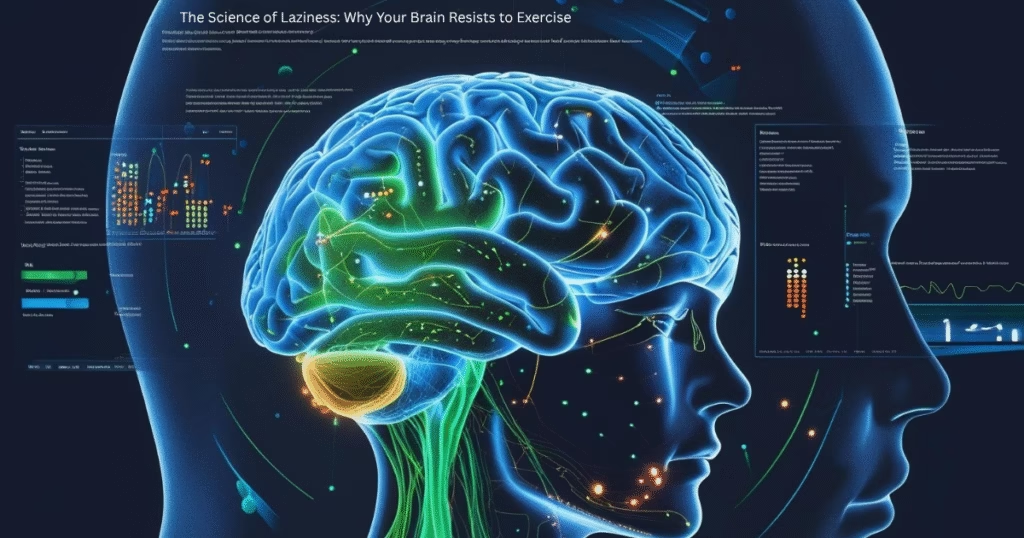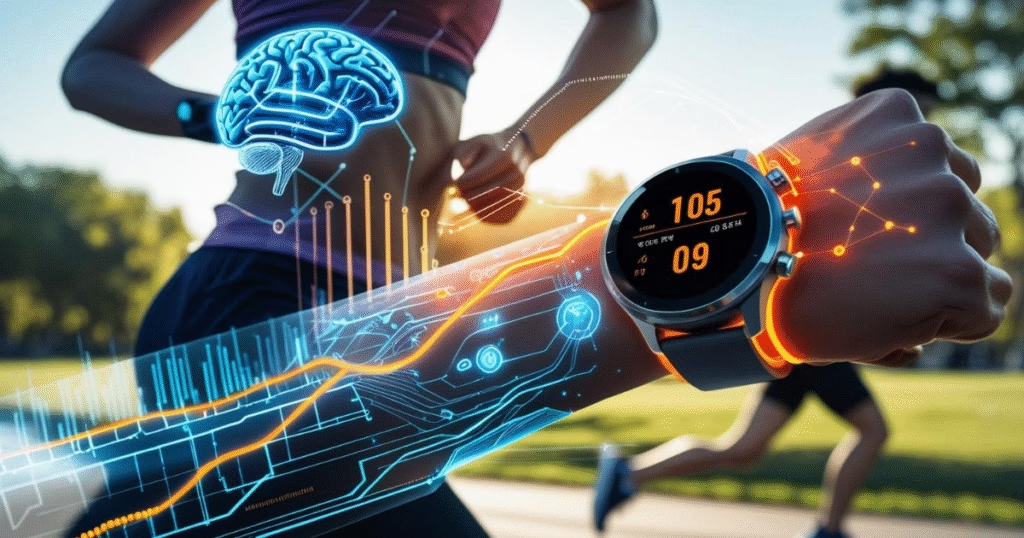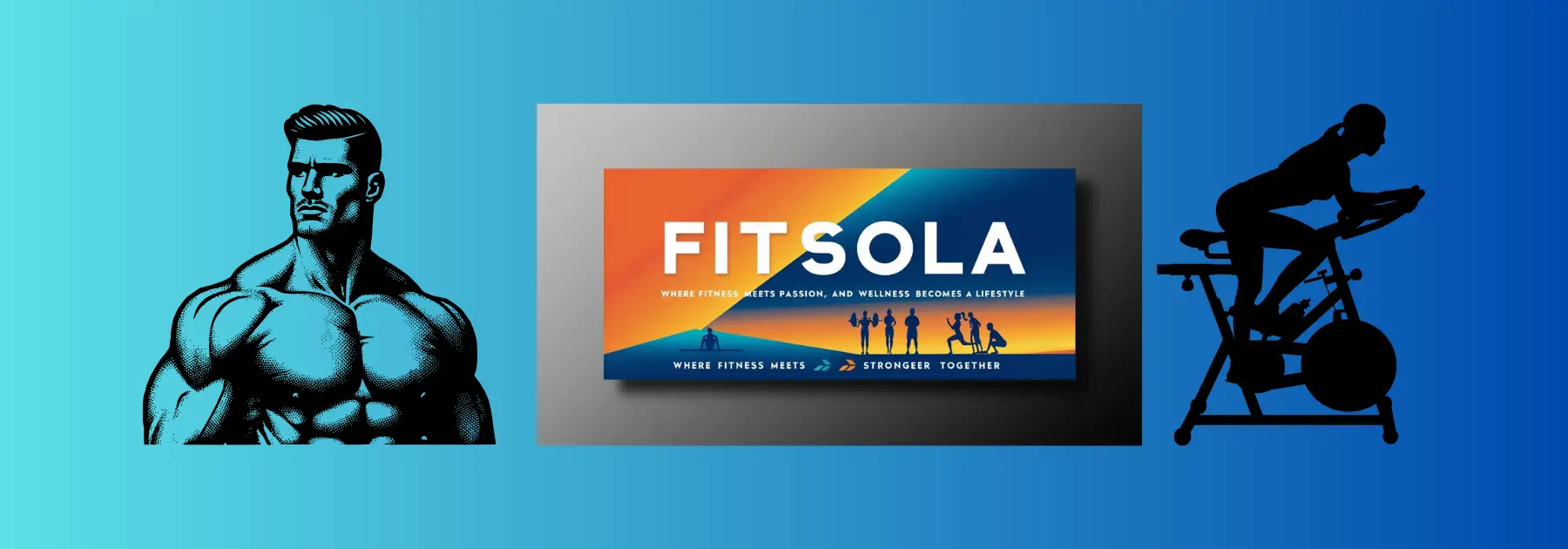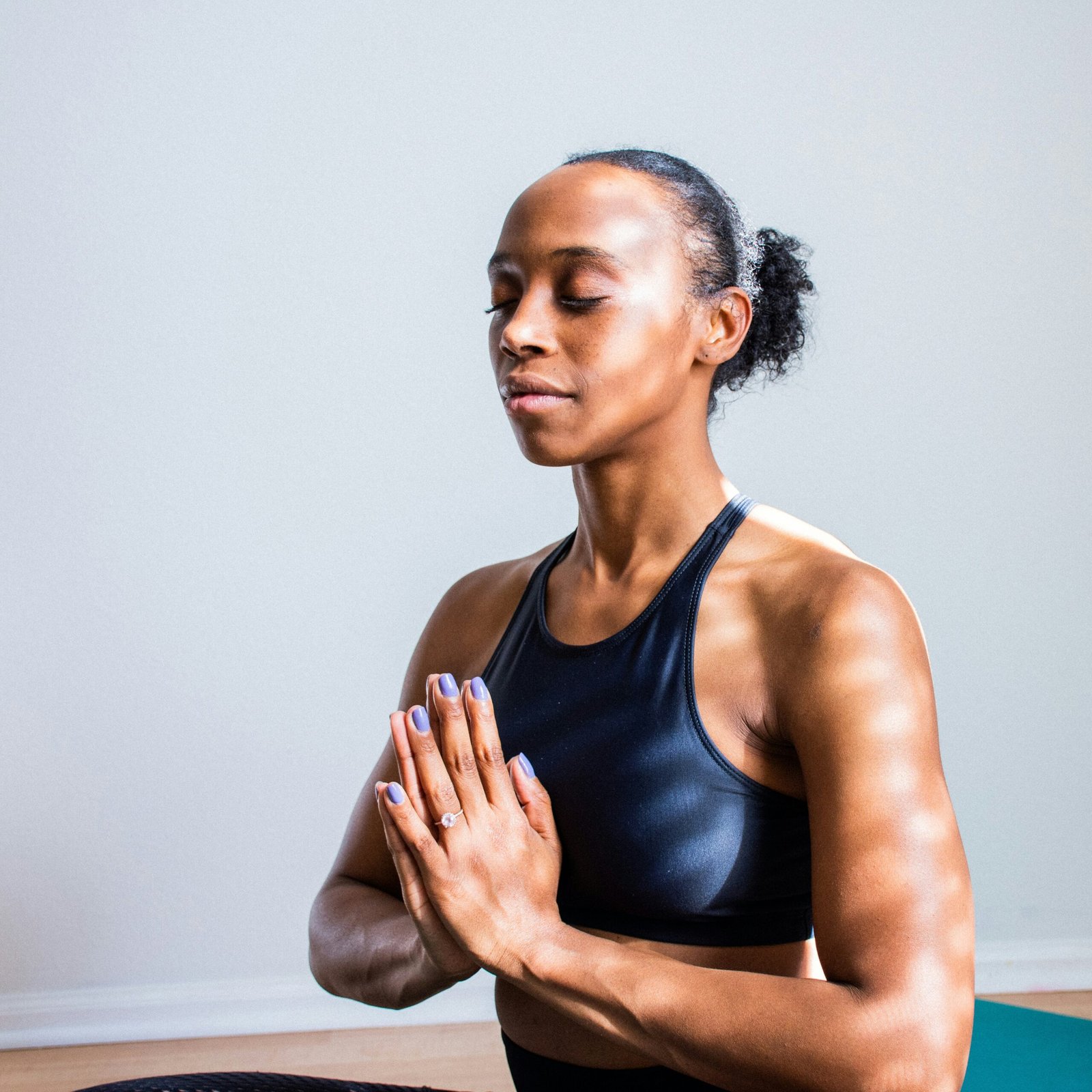Let’s face it: your brain is wired to take the path of least resistance. Why run when you can scroll? Why lift when you can lounge? This isn’t a personal failing—it’s biology. Our ancestors conserved energy to survive, but in today’s world, that same instinct fuels procrastination and skipped workouts. But what if I told you there’s a way to outsmart this natural human tendency? What if you could actually hack your brain’s resistance, making the healthy choice the easiest, most appealing one? That’s precisely where smart Fitness Tech steps in.
For too long, we’ve viewed our fitness journey as a purely willpower-driven endeavor. We set ambitious goals, feel a burst of motivation, and then inevitably, hit a wall when our willpower wanes. This cycle of enthusiasm followed by frustration is incredibly common. But the landscape of health and wellness is rapidly evolving, and technology is no longer just a tracking tool; it’s becoming a strategic partner in overcoming our inherent psychological roadblocks. We’re talking about leveraging cutting-edge gadgets, intelligent apps, and connected platforms to bypass the procrastination, decision fatigue, and aversion to discomfort that often derail our best intentions.
This isn’t about finding a magic bullet that does the work for you. True fitness still demands effort and consistency. However, what smart fitness tech offers is a suite of sophisticated tools designed to lower the barriers to entry, create powerful feedback loops, and inject elements of fun and accountability that our brains naturally respond to. It’s about making the healthy choice the default choice, reducing the friction that often leads us back to old, less desirable habits.
In this deep dive, we’re going to explore the fascinating psychology behind our “lazy” brain and, more importantly, reveal the innovative ways smart fitness tech can be your ultimate ally in building habits that stick. Get ready to transform your approach to wellness, not by fighting your brain, but by cleverly outmaneuvering it.et’s upgrade your approach.
The Science of “Laziness”: Why Your Brain Resists Exercise – The Answer in ‘Fitness Tech’
Before we delve into the hacks, it’s crucial to understand why our brains often prefer the path of least resistance. It’s not because you’re inherently lazy; it’s a sophisticated survival mechanism that, in our modern world, often works against our long-term health goals.

Prefer watching over reading? I dive deeper into topics like this in my YouTube videos. Join me there for actionable insights
1. The Instant Gratification Trap: Why Tomorrow Sounds Better
Our brains are hardwired for immediate rewards. The dopamine system lights up when we anticipate something pleasurable now. Exercise, however, offers delayed gratification. The benefits – improved health, strength, weight loss – are far off. The immediate sensations? Sweat, effort, discomfort. Our ancient brain constantly evaluates: immediate pleasure (sitting) vs. delayed reward (fitness). Without external stimuli or immediate feedback, the “sit now” option often wins. This “present bias” is a powerful force, making it easier to put off tasks whose benefits are distant.
2. Decision Fatigue: The Invisible Energy Drain
Every single decision you make throughout the day, from what to wear to what email to answer, saps your mental energy. By the time you get to the end of a long day, your “willpower muscle” is fatigued. When you then face the decision: “Should I work out, or just go home?” your depleted brain will almost always choose the easiest option, which is often inaction. Too many choices also lead to “analysis paralysis” – an overwhelming feeling that stops you from starting at all.
3. Perceived Effort vs. Actual Effort: The Mental Hurdle
Our brains are masters of exaggeration, especially when it comes to effort. The thought of a grueling workout can feel far more daunting than the workout itself often turns out to be. This overestimation of difficulty creates a mental barrier that makes starting incredibly challenging. It’s a form of self-preservation, signaling “too much energy required, conserve!”
4. The Power of Habit Loops: Good, Bad, and Automatic
Our brains love efficiency. Once a routine is established – whether it’s scrolling social media after dinner or hitting the gym – it becomes an automatic “habit loop” (cue-routine-reward). This is great for positive habits, but devastating for negative ones. If “skip workout” is an established loop, breaking it requires significant conscious effort, which, again, drains willpower.
5. Cognitive Load & The “Work” Factor
For many, exercise feels like another item on the “to-do” list. It’s mental work to plan, execute, and monitor. Our brains are constantly trying to minimize cognitive load, pushing us towards activities that require less thought and perceived effort.
Understanding these psychological tendencies is the first step. The second, more empowering step, is to see how smart fitness tech offers elegant solutions to each of these challenges.
The Hacks: How Smart Fitness Tech Outsmarts Your Brain
Now, let’s turn the tables. Here’s how strategic use of Fitness Tech can bypass your brain’s natural resistance and cultivate lasting healthy habits:

Hack 1: Eliminating Decision Fatigue & Lowering the Barrier (Pre-commitment & Simplicity)
The less thought required to start, the more likely you are to actually start. Smart fitness tech excels at streamlining the process, turning potential “decision points” into automatic actions.
- The Problem: “What workout should I do? How long? What equipment? Where do I even start?” This cascade of questions triggers decision fatigue before you’ve even laced up your shoes.
- The Tech Hack:
- Smart Home Gyms (Peloton, Tonal, Mirror, Tempo, Hydrow): These platforms offer on-demand or live classes that dictate everything. You literally press a button, and an expert coach tells you exactly what to do, what weights to use (Tonal), or what speed to maintain. The decision is made for you, eliminating paralysis. Your brain doesn’t have to choose; it just has to follow.
- Personalized Workout Apps (Future, Jefit, Ladder): These apps generate tailored workout plans based on your goals, available equipment, and even your performance from previous sessions. They adapt, progress you, and manage the complexity, so you don’t have to.
- Pre-set Programs on Wearables: Many smartwatches allow you to load a workout plan (e.g., a running interval session) that guides you through each step with vibrations and on-screen prompts.
- How it Hacks the Brain: By pre-committing you to a specific, guided activity, these tools drastically reduce the cognitive load. The path of least resistance becomes the path to the workout, rather than away from it. It shifts the brain from “Should I?” to “Okay, what’s next?”
Hack 2: Leveraging Instant Gratification & Feedback Loops (Gamification & Data)
Our brains crave immediate rewards. Since the long-term benefits of exercise aren’t instantly visible, fitness tech creates micro-rewards that hit that dopamine button now.
- The Problem: You finish a workout, and aside from sweat, there’s no tangible “win” right away. This lack of immediate reward makes it harder for the brain to form positive associations.
- The Tech Hack:
- Wearable Metrics (Steps, Calories, Heart Rate, HRV): Devices like Apple Watch, Garmin, and Fitbit provide real-time, quantifiable feedback. Closing your “rings,” hitting a step goal, or seeing your heart rate zone light up provides immediate, satisfying visual cues.
- Gamification (Badges, Streaks, Levels): Apps like Strava, Nike Training Club, and even basic fitness trackers incorporate elements of gaming. Earning a “personal best” badge, maintaining a workout streak, or leveling up your fitness score triggers the brain’s reward system, making exercise feel like an achievement rather than a chore.
- Leaderboards & Challenges: The competitive aspect on platforms like Peloton or Strava allows for instant social validation and a sense of accomplishment by seeing your ranking.
- How it Hacks the Brain: These immediate, often visual, rewards provide the dopamine hit our brains crave. Each small win reinforces the positive behavior, making the brain associate exercise not with discomfort, but with achievement and satisfaction. It transforms the abstract goal of “getting fit” into concrete, daily victories.
Hack 3: Personalization & Adaptability (AI & Smart Coaching)
The brain is more willing to engage when it feels understood and catered to. Generic advice often leads to resistance. Smart tech offers bespoke solutions.
- The Problem: “This workout is too hard/easy.” “Am I even doing this right?” “I’m tired today, should I push through or rest?” These uncertainties lead to doubt and can demotivate.
- The Tech Hack:
- AI-Powered Personal Training (e.g., Tonal, Future, some advanced wearables): AI analyzes your performance, listens to your body’s signals (via connected wearables), and dynamically adjusts your workout. If you’re struggling, it might lower the weight; if you’re crushing it, it might increase the resistance. It suggests recovery days based on your Heart Rate Variability (HRV) and sleep data.
- Adaptive Programs: Instead of a static plan, smart tech provides programs that evolve with you. This constant, subtle progression keeps things challenging but not overwhelming, preventing boredom and plateaus.
- Form Correction: Some devices or apps (e.g., specialized sensors, smart mats) can provide real-time feedback on your form, preventing injury and ensuring efficacy, alleviating the “am I doing this right?” anxiety.
- How it Hacks the Brain: By making the workout feel perfectly tailored to your current state and abilities, the brain perceives less threat and more support. It removes the mental burden of self-assessment and guesswork, allowing you to focus purely on the movement. This fosters a sense of competence and progress, boosting motivation.
Hack 4: Social Accountability & Community (External Motivation)
Humans are social creatures. Our brains are wired to respond to social cues, positive reinforcement, and a sense of belonging.
- The Problem: Working out alone can feel isolating. When motivation dips, there’s no external push to keep going.
- The Tech Hack:
- Shared Workouts & Leaderboards: Platforms like Peloton and Strava thrive on shared experiences. Seeing friends’ activities, getting “kudos” on your runs, or competing on a leaderboard provides a powerful external motivator. Knowing your efforts are visible to others can activate the desire for positive social reinforcement.
- Virtual Group Classes & Challenges: Joining a live Peloton class with thousands of others, or participating in an app-based challenge with friends, creates a sense of collective endeavor. It taps into the power of a group to push individual effort.
- Community Forums & Groups: Many apps and brands host online communities where users can share tips, ask questions, and offer encouragement, fostering a sense of belonging and mutual support.
- How it Hacks the Brain: This taps into our innate desire for connection and recognition. The brain understands that others are watching (or participating), providing a layer of accountability that’s harder to ignore. It transforms a solitary activity into a shared journey, amplifying motivation through social bonds.
Hack 5: Rewiring the Reward System (Mindful Movement & Positive Association)
Ultimately, the goal is to make exercise feel less like a punishment and more like an enjoyable, beneficial activity. Tech can help shift this perception.
- The Problem: Many people view exercise as a chore, a means to an end, or even a form of punishment for unhealthy eating. This negative association makes the brain resistant.
- The Tech Hack:
- Immersive VR Fitness: Experiences like Supernatural (on Meta Quest) immerse you in virtual worlds, turning workouts into engaging games or explorations. The focus shifts from the effort to the experience, making exercise genuinely fun.
- Guided Mindful Movement: Apps integrating mindfulness with movement (e.g., guided yoga, walking meditations) help you connect with your body and the positive sensations of exercise, rather than just the calorie burn or muscle fatigue.
- Post-Workout Prompts & Celebrations: Many apps conclude workouts with encouraging messages, summary statistics, or even a virtual “high five.” These deliberate celebratory moments help solidify a positive feeling after effort.
- How it Hacks the Brain: By making exercise enjoyable and rewarding in itself, rather than just for its delayed outcomes, the brain begins to form stronger, more positive associations. When the activity itself is a source of pleasure or engagement, the internal resistance diminishes, and consistency becomes a natural byproduct.
Building Sustainable Habits: The Long Game with Tech
It’s clear that smart Fitness Tech offers a powerful arsenal against our brain’s natural tendencies towards inertia. But it’s not a one-and-done solution. Building long-term habits requires consistent application of these “hacks.”
- Start Small, Track Everything: Begin with one or two pieces of tech that genuinely appeal to you. Use them to track small, achievable goals. Seeing those small wins accumulate (streaks, badges, consistency graphs) is incredibly powerful for the “lazy brain.”
- Listen to Your Data: Don’t just collect data; use it. If your wearable says your HRV is low or your sleep quality was poor, that’s your AI coach telling your brain it needs recovery, not a brutal workout. Honoring this data prevents burnout and reinforces a positive relationship with exercise.
- Automate Decisions: Leverage the decision-reducing power of tech. Schedule your workouts in advance, choose a guided program, and let the tech lead the way. The less you have to think about what to do, the more likely you are to do it.
- Embrace the Community: If social motivation resonates with you, lean into it. Join virtual groups, follow friends on fitness apps, and participate in challenges. The collective energy can be a profound antidote to individual inertia.
- Refine Your Reward System: Actively seek out ways to make exercise enjoyable. If traditional workouts bore you, explore VR fitness, active gaming, or guided outdoor adventures that your tech can track. Find what makes your brain say, “Yes, that was fun!”
The Last Word
Remember, Fitness Tech isn’t about replacing your effort; it’s about making your effort more effective, more consistent, and ultimately, more enjoyable. It’s about recognizing that our brains are incredibly complex and that sometimes, a little strategic “hacking” is exactly what we need to bridge the gap between knowing what’s good for us and actually doing it.
As the sun now sets, casting long shadows across the landscape that has witnessed countless journeys, both physical and spiritual, I’m reminded that every journey begins with a single step. And often, that first step is the hardest. But with the right tools – tools designed to understand and even work with our inherently human tendencies – those difficult first steps become easier. They become automated. They become celebrated.
So, if you’ve been struggling to make fitness a consistent part of your life, consider this your invitation to explore the world of smart fitness tech. It’s not just about getting fitter; it’s about mastering your own mind, turning resistance into routine, and ultimately, unlocking a healthier, more vibrant you.
What’s your biggest fitness roadblock, and how do you think smart tech could help you overcome it? Share your thoughts in the comments below!




[…] Introduction to Fitness Technology […]